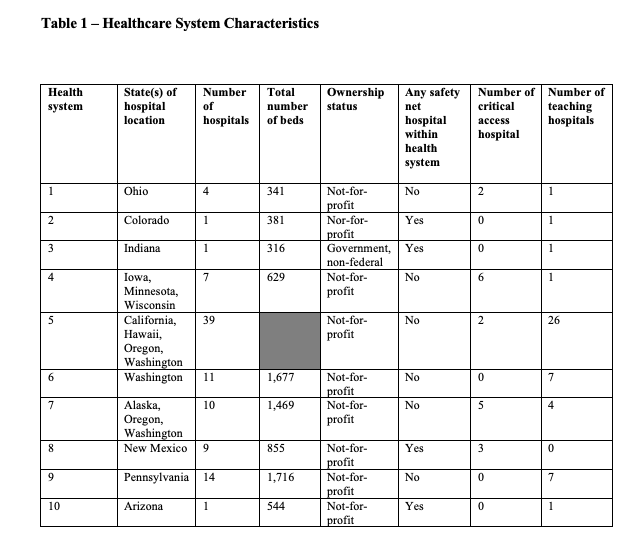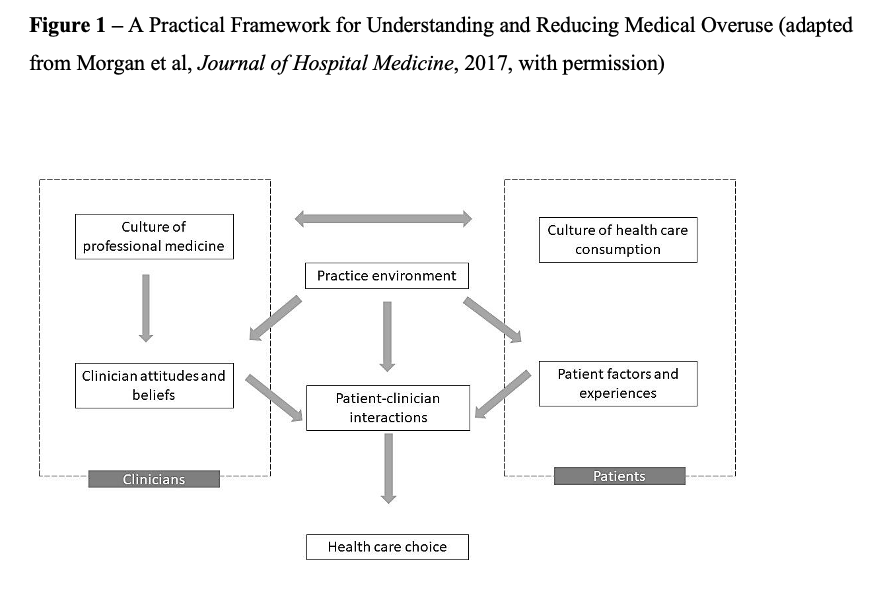Background: Healthcare in the U.S. is increasingly delivered by large health systems that include one or more hospitals and associated outpatient practices. It is unclear what role health systems play in driving or preventing overutilization of healthcare services in the U.S. We sought to learn what characteristics allow certain health systems to avoid low-value care while still providing adequate quality.
Methods: We identified “positive deviant” health systems using a previously constructed and validated claims-based Overuse Index (OI). These systems have much lower-than-average use of low-value healthcare services, but also provide adequate quality of care. Hospitals were grouped into health care systems using the 2018 AHRQ Compendium of Health Systems. Hospital quality was assessed using CMS Hospital Compare overall star ratings and disease-specific readmission and mortality data. We developed an interview guide and conducted semi-structured interviews with health system leaders, preferentially with chief medical, clinical, and quality officers, and iteratively developed a code book. Paired reviewers coded and reconciled each interview. We analyzed the interviews by applying constant comparative techniques. We mapped the emergent themes to provide the first empirical data to support a previously developed theoretical framework (Figure 1).
Results: We interviewed 15 leaders from 10 diverse health systems (Table 1). Consistent with important domains from the overuse framework, common themes from our study support the role of clinicians and patients in avoiding overuse. The leaders described how they create a culture of professional practice and how they modify clinicians’ attitudes to facilitate high-value practices. They also described how their patients view healthcare consumption and the characteristics of their patient populations allowed them to practice high-value medicine. They described the role of quality metrics, insurance plan ownership, and alternative payment model participation as encouraging avoidance of overuse.
Conclusions: Our qualitative analysis of positive deviant health systems supports the framework that is in the published literature, although health system leaders also described their financial structures as another important factor for reducing overuse and encouraging high-value care delivery.


